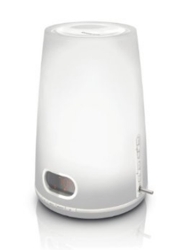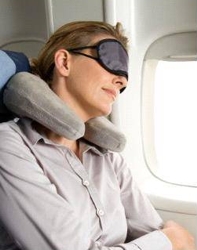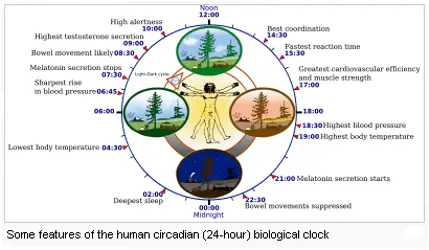|
||||||||||
 |
|
| June 24, 2013 | To ensure delivery of this email, please add newsletter@hairboutique.com to your contacts. |
Sleep Therapy For Healthy Hair  This Week's 20% Off Code: BEAUTIFULVIBRANCE20 Bottom line? Without consistent, deep and restful sleep the body simply cannot grow or maintain healthy vibrant hair. Scientific studies have also shown that consistent sleep deprivation can activate a wide range of health and mental challenges. Unfortunately not everyone has an easy time achieving consistently deep and restful sleep. There are a lot of options to help assist those with sleep challenges. Sleep therapy for hair health has come a long way over the past few years. If pre-sleep hot baths, melatonin, aromatherapy, hot milk or deep breathing doesn’t work, it doesn’t mean you have to resort to sleep medications. Sleep researchers recommend a variety of techniques and innovative sleep therapy for hair health. Popular And Non Prescription Sleep Therapies Two popular and non-prescriptive sleep therapies include: 1. Dawn/Dusk Stimulation These two therapies are detailed below:
If you have difficulty falling asleep at night and waking up in the morning, try dawn/dusk simulations, a form of sleep therapy which ultimately resets your body clock. Your body uses natural signals, including sunlight and darkness, to activate hormones that make you active in the morning and sleepy at night. Bright light, particularly morning sunlight, provides the strongest signal the body uses to regulate this hormonal cycle, called your circadian rhythm. If you typically awaken before sunrise or work in artificially lit environments, your circadian rhythm may have gotten out of sync. Using a light box may help you reset it. How To Reset Your Body Clock Follow the steps below to reset your body clock: Spend the first half hour of each morning in stimulating dawn by sitting in front of a light box. You can sit in front of a light box as you go about your morning schedule including eating breakfast or having your tea or coffee. Sleep experts recommend a light box which optimally will deliver 10,000 lux at a distance of at least 20 inches. The light box should also have a large field of view which is at least 18″ wide. Even better is a box that provides white light with an extra boost of blue or blue green light which may be more effective than a plain white box. Note: There are many different types of light boxes which offer a variety of features and options with Before you go to bed, spend time by simulating dusk. Close all the drapes and curtains, keeping lights in your environment dim. This will simulate dusk. If you religiously follow these two important daily simulations your body clock should be reset within a week at the longest, a few days at the shortest. Challenges Resetting Your Body Clock If for some reason your body clock doesn’t reset and your insomnia continues, there are steps you can take. Set your alarm a half hour earlier than normal for one week and use your light box. With a little experimentation you’ll eventually hit a magical sweet spot for your sleep cycle. Once most people find the right amount of time they need in front of their light box every day, they will eventually be able to discontinue the daily light box therapy unless they are night owls or have a disruptive night/day work schedule. For people who have extreme sleep challenges, using a dawn/dusk simulation on an indefinite basis will help them achieve healthy sleep.
Although the body may learn over time to get along without sleep, this therapy operates under the theory that the body can be retrained to sleep longer and deeper. Sleep restriction therapy requires that each person undergoing the treatment estimate how much sleep you typically get each night. This is actual sleep, now how many hours you may be tossing and turning in bed hoping for sleep. As an example, you may be in bed for eight hours, but only achieve five hours of actual sleep. Sleep Restriction Therapy requires you to only stay in bed for the amount of time you actually sleep such as five hours rather than eight hours. With Sleep Restriction Therapy you schedule your time in bed, as an example, for five hours. If your scheduled sleep time is five hours, you must get up after five hours. With this therapy you only use your bedroom for romance. The only exception for using the bedroom is for romance without sleep afterwards. Mid-day naps are also forbidden. Challenges With Sleep Restriction Therapy Although many insomniacs achieve great success with Sleep Restriction Therapy it can be With Sleep Restriction Therapy, once you go to bed for your normal sleep schedule, if you don’t fall asleep immediately, the longest you can stay in bed while lying awake is 15 minutes. If you can’t sleep for 15 minutes, get out of bed, keep your body temperature warm, leave the bedroom and go engage in a quiet, peaceful activity in a dimly lit room. Return to bed when you’re ready to fall asleep. During Sleep Restriction Therapy, your body will become so exhausted by the third or fourth night of a limited sleep schedule, that you’ll probably sleep through the night. Once you sleep deeply and restfully for two or three nights in a row, you can start to increase your sleep schedule in increments of 15 minutes. If your sleep schedule was five hours, increase it to 5 hours and 15 minutes and then 5 hours and 30 minutes until you are able to sleep to the desired hourly schedule, whatever that number may be. Most sleep experts believe the best sleep periods are seven to nine hours of sleep although many people are only able to achieve a full seven. If adding extra minutes causes wakefulness, keep repeating the new schedule until you sleep soundly again for a couple of days. Sleep experts report that Sleep Restriction Therapy has been proven in many cases to be as powerful as taking sleep medication for those who suffer from insomnia. It is more powerful in the long run. Other Causes Of Insomnia
When addressing long-term sleep disorders, be sure to talk to your primary health care provider for proper analyzation and before trying either of the two insomnia treatments mentioned in this newsletter. Summary If you have trouble falling and staying asleep, and spend time tossing and turning, two key insomnia treatments may offer relief. The two therapies include Dawn/Dusk Stimulation and Sleep Restriction Therapy. Achieving quality sleep on a consistent schedule is very important for many reasons including growing and maintaining healthy hair as well as having a healthy alert mind and strong body. There are many benefits to achieving deep and restful sleep which is why it’s important to deal with long-term insomnia when it occurs. Image courtesy HAAP Media and Philips |
| If you would like to consult with Karen personally about any of your hair care questions, please see our Ask Karen page. We would love your feedback about this newsletter! Share your thoughts and ideas with us! |
 |
 |
 |
 |
 |
 |
| Copyright 1997-2009, hairboutique.com, All Rights Reserved. Terms of Service, Privacy Statement, Advertise, Contact Us, Press |
| Please note that you are receiving this mail because in the past you signed up for the HairBoutique.com mailing list. This mailing is in full compliance with U.S. Federal requirements for commercial e-mail under bill s.1618 Title 111, Section 301, Paragraph (a) (2) (c) passed by the 105th U.S. Congress. |



 1. Dawn/Dusk Stimulation – This therapy is also known as resetting the body clock or the circadian rhythm to encourage the development of balanced sleep cycles.
1. Dawn/Dusk Stimulation – This therapy is also known as resetting the body clock or the circadian rhythm to encourage the development of balanced sleep cycles. a wide range of price tags. Do your homework before buying one.
a wide range of price tags. Do your homework before buying one. 2. Sleep Restriction Therapy – This therapy is designed around the concept that the human body has learned over time to function on less sleep. This can happen over time when traditional sleep cycles are cut short due to increased work or school schedules. This can also happen when a
2. Sleep Restriction Therapy – This therapy is designed around the concept that the human body has learned over time to function on less sleep. This can happen over time when traditional sleep cycles are cut short due to increased work or school schedules. This can also happen when a  challenging at first. The hardest part for many people is when keeping to a set sleep schedule you must get out of bed at your agreed upon wake-up time, no matter what. Obviously Sleep Restriction Therapy requires serious commitment and willpower.
challenging at first. The hardest part for many people is when keeping to a set sleep schedule you must get out of bed at your agreed upon wake-up time, no matter what. Obviously Sleep Restriction Therapy requires serious commitment and willpower. Although long-term insomnia may be due to simple disruptions in the circadian rhythm or sleep schedules due to stresses or other life interruptions, in some cases sleep disorders may be tied to depressive states or other physical illnesses.
Although long-term insomnia may be due to simple disruptions in the circadian rhythm or sleep schedules due to stresses or other life interruptions, in some cases sleep disorders may be tied to depressive states or other physical illnesses.
